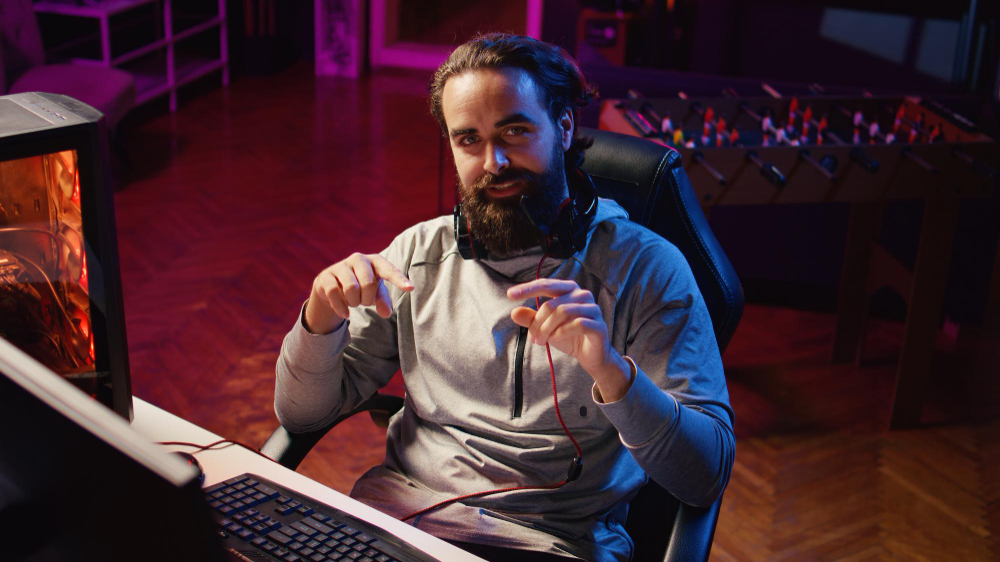Unleashing Creativity: Comprehensive Guide to Image Editing Freelance Services
Table of Contents
- Introduction to Image Editing Freelance Services
- Types of Image Editing Services
- Tools of the Trade
- Key Skills of a Quality Image Editor
- How to Choose the Right Freelance Image Editor
- The Future of Image Editing Freelance Services
1. Introduction to Image Editing Freelance Services
Every picture tells a story. But a picture can tell a thousand different stories when given a creative spin. This is the premise of image editing, a discipline that brings an artist's touch to otherwise ordinary visuals, transforming them into remarkable pieces of art.
Image editing freelance services are a specialized sector within the digital creative industry, taking raw digital or analog images and reshaping them into compelling narratives. Freelance image editors utilize a combination of technical expertise and artistic flair to enhance, alter, or completely reinvent visuals. Whether it's fine-tuning a family portrait, creating striking marketing materials, or restoring treasured memories, these services cater to a myriad of individual and professional needs.
Businesses, in particular, find immense value in the work of image editing freelancers. High-quality, professional images can bolster a brand's image, help sell products, and engage audiences on social media. In a world increasingly driven by visual content, businesses of all sizes and across all industries are investing in image editing services to stand out in the digital landscape.
Individuals also leverage these services for personal needs. Perhaps you have a collection of old family photographs you'd like restored, or maybe you're an amateur photographer looking to enhance your snaps for a professional look. With the rise of social media and digital photography, there's a growing demand for personal image editing services to make every shot Instagram-worthy.
The beauty of image editing freelance services lies in their flexibility. Unlike traditional agencies, freelance image editors offer a more personalized service, taking the time to understand your unique requirements, style preferences, and project goals. They work on a flexible schedule, enabling fast turnarounds for time-sensitive projects.
The field of image editing freelance services is as diverse as the imagination of the artists who work within it. From digital manipulations that transport viewers into fantasy realms to subtle enhancements that highlight the natural beauty of a photograph, the possibilities are truly endless.
So whether you're a business seeking to elevate your brand's visual presence, a professional photographer in need of post-production support, or an individual looking to bring a creative vision to life, image editing freelance services offer the expertise and creativity to make it happen.
2. Types of Image Editing Services
The realm of image editing is expansive, offering a multitude of services catering to different needs. Understanding these services can help you identify what your project requires and find the right freelancer to fulfill those needs.
2.1 Photo Retouching
Photo retouching is one of the most common image editing services. It involves enhancing a photograph to improve its quality and aesthetics. This could include adjusting brightness and contrast, correcting color balance, removing unwanted blemishes or objects, and smoothing skin textures. It's often used in fashion, advertising, and portrait photography, where perfecting the final image is crucial.
2.2 Photo Manipulation
Photo manipulation involves altering or transforming a photo to create an illusion or deception. This service is popular in conceptual art and advertising, where images often need to convey a particular message or theme. With this service, multiple images or elements can be combined into a single composition, backgrounds can be swapped, and elements can be added or removed to achieve the desired effect.
2.3 Color Grading
Color grading is the process of altering and enhancing the color of a photo. This can be used to set the mood, draw attention to particular elements, or create a stylistic theme across a set of images. It's a vital tool in photography, advertising, and filmmaking, where the color can significantly impact the viewer's perception and emotional response.
2.4 Photo Restoration
Photo restoration services focus on reviving old, damaged, or faded photographs. Whether it's restoring a cherished family photo, reviving a historical image, or repairing a damaged digital file, photo restoration experts can breathe new life into the old photos, preserving precious memories for future generations.
2.5 Graphic Design
In addition to working with existing photos, some image editors offer graphic design services. They can create visuals from scratch or by combining multiple images, often incorporating text, icons, and other design elements. This service is useful for creating logos, banners, social media posts, infographics, and other marketing materials.
2.6 Commercial Product Editing
Commercial product editing is a specialized service aimed at improving product images for online stores, catalogs, and advertising. It might involve background removal, adding shadows or reflections for a more realistic look, correcting colors to match the real product, or creating composite images to show different angles or features of a product.
Each type of image editing service offers a unique blend of creativity and technical expertise. Depending on the specifics of your project, you might need one or a combination of these services. A skilled freelance image editor can guide you on the best approach to realize your vision.
3. Tools of the Trade
Image editing is an art form that requires both skill and the right set of tools. The rapid advancements in technology have resulted in an array of sophisticated software that image editing freelancers use to transform ordinary photos into extraordinary works of art. Here, we explore some of the key tools used in this trade.
3.1 Adobe Photoshop
Adobe Photoshop is the industry standard for image editing and graphic design. It offers a comprehensive suite of tools for retouching, manipulating, and enhancing photos, as well as creating digital artwork from scratch. It's known for its extensive functionality, including layers, masks, filters, and brushes, which allow for precise and detailed work.
3.2 Adobe Lightroom
Adobe Lightroom is a powerful tool for photographers, specializing in photo management and post-production. It excels in bulk editing, enabling users to apply edits to multiple photos at once. Its non-destructive editing approach allows adjustments to color, exposure, and tone without altering the original image file.
3.3 Affinity Photo
Affinity Photo is a professional editing tool that provides a robust alternative to Adobe’s suite. With similar functionalities to Photoshop, it is excellent for photo retouching and manipulation. It also supports a wide range of file types, making it highly versatile for various projects.
3.4 GIMP
GIMP (GNU Image Manipulation Program) is a free, open-source image editor. Although it may not offer as much depth as Photoshop, it has a solid range of tools for photo retouching, image composition, and image authoring. It's a popular choice for freelancers starting out or those working with a limited budget.
3.5 Capture One
Capture One is a professional-grade image editing software known for its superior color grading capabilities. It offers advanced tethering, detailed color control, and high-speed RAW file handling. It's especially popular among professional photographers, particularly those working in fashion and advertising.
3.6 Canva
Canva is an online design tool that simplifies graphic design. With a plethora of templates and design elements to choose from, Canva is great for creating social media posts, presentations, posters, and other marketing materials. While it doesn't provide deep editing capabilities, it's an excellent tool for quick, eye-catching designs.
These tools are the lifeblood of image editing freelance services. They equip freelancers with the means to create, enhance, manipulate, and transform images to match a client's vision. Mastering these tools, knowing their strengths, and understanding which to use in different contexts is a fundamental part of a successful freelance image editor's skill set.
4. Key Skills of a Quality Image Editor
Image editing is a complex field, requiring a blend of technical prowess, artistic vision, and a keen eye for detail. A quality image editor doesn't just master the use of tools and software; they also cultivate a range of skills that contribute to their overall effectiveness and success in the field.
4.1 Visual Creativity
At its heart, image editing is a form of visual art. A great image editor needs to have a creative mind and an artistic eye. They should be capable of visualizing the final product and understand how different elements come together to form a cohesive and engaging visual narrative.
4.2 Technical Expertise
A solid understanding of image editing tools and software is a must. This includes familiarity with a range of functionalities from basic tasks like cropping and resizing images to complex processes like masking and layering. It's also crucial for an editor to stay updated with the latest advancements in editing tools and technology.
4.3 Attention to Detail
A keen eye for detail is essential for spotting imperfections and identifying areas for improvement. This could involve noticing small inconsistencies in lighting, spotting distracting elements in the frame, or detecting minor color mismatches.
4.4 Patience and Focus
Quality image editing can be time-consuming and often requires performing intricate tasks. Therefore, patience and focus are key. The ability to spend hours fine-tuning an image without rushing the process often separates a great image editor from an average one.
4.5 Understanding of Color Theory
An understanding of color theory is integral to image editing. This includes knowing how colors interact, how they affect each other, and how they can influence mood and perception. It aids in color correction, grading, and creating appealing color schemes.
4.6 Good Communication Skills
Image editors often work closely with clients to understand their vision and deliver results that meet their expectations. Hence, good communication skills are vital. This not only involves clear and effective verbal and written communication but also being a good listener and interpreter of client needs.
4.7 Time Management
Freelance image editors typically juggle multiple projects at once, each with its own deadline. Good time management skills and the ability to prioritize tasks effectively are crucial to maintaining workflow and meeting client deadlines.
These skills, when combined, equip an image editor to deliver high-quality work that satisfies clients and sets them apart in the competitive freelance market. A truly skilled image editor constantly works on refining these skills, turning each project into a masterpiece that tells a unique story.
5. How to Choose the Right Freelance Image Editor
Choosing the right freelance image editor is critical to ensuring that your project's visual components are on point. Here are some key considerations when making your choice.
5.1 Assess Their Portfolio
The first step in selecting the right freelancer is to assess their portfolio. This should give you a sense of their style, skill level, and versatility. Look for consistency in quality across different projects and see if their previous work aligns with the aesthetic you're aiming for.
5.2 Understand Their Specialization
Different image editors specialize in different areas - some might excel in photo restoration while others in commercial product editing or graphic design. Make sure that their area of expertise aligns with the needs of your project.
5.3 Check Their Knowledge of Tools
A good image editor should be proficient in using a variety of image editing tools and software. Ask them about their experience with different platforms and how they leverage these tools to deliver the best results.
5.4 Review Client Testimonials
Reviews and testimonials from previous clients can provide invaluable insight into the freelancer's professionalism, reliability, and quality of work. Look for feedback on their communication skills, adherence to deadlines, and overall satisfaction with the finished product.
5.5 Arrange a Consultation
Arrange a consultation, either in person or virtually, to discuss your project in detail. This will help you gauge their understanding of your project, their creativity, and their ability to communicate effectively.
5.6 Consider Their Turnaround Times
Speed and efficiency can be crucial, especially for time-sensitive projects. Ask about their expected turnaround times and ensure they can accommodate your schedule.
5.7 Evaluate Their Pricing
Pricing is a crucial factor but remember that it shouldn't be the sole determining factor. While you might be tempted to go for the cheapest option, it's important to consider the value you're getting for the price. High-quality work might come at a higher cost, but it can be worth the investment.
Choosing the right freelance image editor is about finding a balance between their skills, experience, style, and your project's specific needs. By considering these factors, you can ensure that you find the right fit and get the best possible results for your project.
6. The Future of Image Editing Freelance Services
The field of image editing is dynamic and constantly evolving, driven by technological advancements and changing consumer trends. Here's a look at what the future may hold for image editing freelance services.
6.1 Adoption of Advanced Technologies
New technologies like artificial intelligence (AI) and augmented reality (AR) are making their way into the image editing sphere. AI is being used to automate routine tasks, like removing backgrounds or color correction, making the editing process faster and more efficient. AR, on the other hand, offers exciting possibilities for photo manipulation and virtual reality content creation.
6.2 Increased Demand for Personalized Services
As more businesses recognize the value of visual content in their marketing strategies, the demand for personalized image editing services is expected to rise. Businesses are increasingly seeking unique and custom visual content to stand out in a crowded digital space.
6.3 Growth in E-commerce Editing Services
The e-commerce sector continues to boom, and with it, the demand for product image editing services. High-quality product images can significantly impact online sales, and businesses are investing heavily in professional image editing to enhance their product photos.
6.4 Rise of Mobile Image Editing
With the advancement of smartphone technology, more people are taking high-quality photos on their devices. This has led to a surge in mobile image editing. In response, image editors are optimizing their services for mobile platforms and learning to work effectively with mobile-generated content.
6.5 Focus on Ethical Editing Practices
In response to growing concerns about unrealistic beauty standards and deceptive marketing, the industry is moving towards more ethical editing practices. This includes a shift away from excessive retouching and a move towards more natural and realistic portrayals in edited images.
The future of image editing freelance services looks vibrant and promising. As the field continues to evolve and adapt to new technologies and trends, so too will the role of the freelance image editor. They'll need to keep their skills up-to-date, stay on top of industry developments, and continually adapt their services to meet changing consumer needs.
The world of image editing freelance services is vast and varied, offering endless possibilities for creativity. By understanding what these services entail and how to choose the right professional, you can unlock the full potential of your visual content. And remember, a picture is worth a thousand words, so make sure each one counts!














